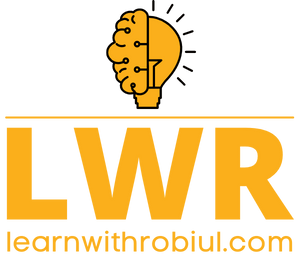Learning SEO can sometimes feel like learning another language, with all the jargon and industry terms you’re expected to know. This chapter-by-chapter glossary will help you get a handle on all the new words. SEO or Search Engine Optimization is defined as the process of improving (optimising) the visibility of a website/webpage on Search Engines, such as Google, Bing, etc. While ads are a part of the internet and are meant to be seen by users, don’t let them become overly distracting or prevent your users from reading your content. For example, advertisements, or interstitial pages (pages displayed before or after the content you’re expecting) that make it difficult to use the website. However, don’t worry if you don’t anticipate every variation of how someone might seek your content.
You can take advantage of tools like Semrush’s Position Tracking tool to keep a close eye on your rankings for your targeted keywords. And improving website performance, user experience, and overall crawlability can positively impact your search ranking. The tool provides a list of potential websites for backlinks and offers essential data about each prospect. The more high-quality backlinks your website has, the better your Google rankings are likely to be.
READ OUR TOP-RATED SEARCH MARKETING BOOKS
Video SEO is the process of creating and optimizing videos for maximum visibility in search results. This includes results on search engines like Google and video platforms like YouTube. On-page SEO is the process of optimizing webpages to improve their search visibility. It helps small websites compete with larger ones, drives organic traffic without relying solely on ads, and builds credibility by appearing at the top of search results. Keyword Research is important in SEO as it helps to target which keyword suits best according to the user query.
One of the most common 4xx errors is the “404 – not found” error. These might occur because of a URL typo, deleted page, or broken redirect, just to name a few examples. Non-text media forms (images, video, GIFs, etc.) should not be used to display text that you wish to be indexed.
Learn
Search engines use complex processes and criteria to rank results, aiming to provide users with the best search experience. Search engine marketing (SEM) promotes a business through unpaid or paid results on search engines, often both. SEO involves making your site more appealing to both users and search engines. If you’re serious about improving search traffic we do recommend reading the Beginner’s Guide to SEO front-to-back.
Similarly, a gap analysis against your competitors serves as an essential tool. Incorporating a strategic frequency of content-focused SEO, we ensure that every piece endorses your brand’s authority, enhancing stability and rankings in SERPs. Our commitment is to create and craft content rich in value and optimized for SEO success.
SEO Content
Links are how search engines discover new pages and judge their “authority.” It’s hard to rank for competitive terms without links. Second, add descriptive alt text (HTML image descriptions) to images that carry important meaning. To help search engines and users of screen readers understand what the image depicts. Write a unique title tag (off-page title) for each page to help search engines understand what your pages are about and rank them accordingly. Search engine optimization (SEO) best practices are tried-and-tested ways to improve your visibility in search engines SEO Anomaly like Google.
This involves optimizing your website’s content and structure, so search engines can understand it better, and also improving your site’s reputation and authority on the web. The goal is to attract more visitors to your site naturally, without paying for ads, by making your site more appealing to search engines like Google. Think of off-page SEO as an online version of word-of-mouth referrals. These SEO activities occur outside of your website, signaling to search engines (and humans) that your brand is credible and relevant. Off-page SEO strategies can improve your brand reputation, increase rankings, and drive traffic. Keep in mind that ranking on the first page of search results can significantly influence your organic marketing strategy.
- She loves to share her knowledge with others in order to help them grow their online presence.
- Users who want to succeed on LinkedIn usually strive to improve their LinkedIn Social Selling Index (SSI).
- With SEO, you can optimize different parts of your website and page to fit various criteria of the ever-changing search algorithms.
- That means if your website isn’t optimized for mobile devices, it might not perform well in SERPs.
A comprehensive approach is essential to elevate your code for optimal search engine rankings. Our company employs a multifaceted keyword strategy, integrating keywords effectively throughout your website. However, unlike many SEO companies whose optimization process stops at basic HTML element adjustments, SEO Inc. delves deeper into code optimization and strategy. Moreover, the search engine’s algorithms will also consider extensive ranking factors, such as relevant keywords, backlink quality, and content freshness. Search engine optimization (SEO) is the practice of orienting your website to rank higher on a search engine results page (SERP) so that you receive more traffic.
Search engines can’t view the images on your pages like your visitors typically would, so they rely on alt text descriptions on your webpage to categorize imagery. Click-Through Rate measures the percentage of users who click on a link to your site in search engine results pages (SERPs) out of the total users who viewed the link. Each of these factors plays a role in how well your site ranks for relevant search queries. The better you optimize these elements, the higher your chance of being seen by potential visitors when they search for information related to what you offer. A smart approach is to study how your competitors are earning their backlinks.
